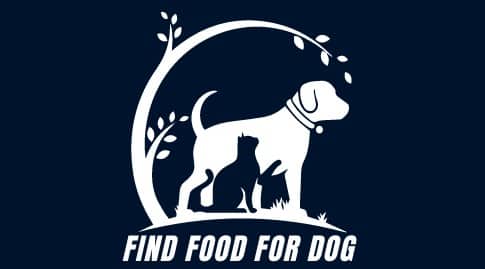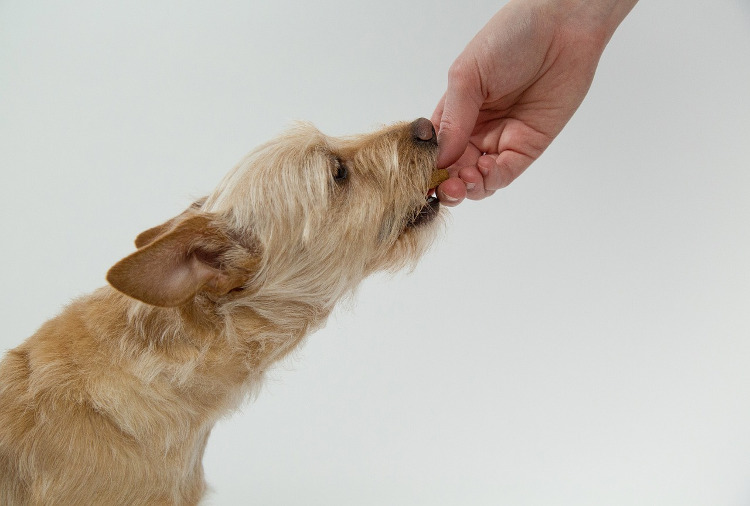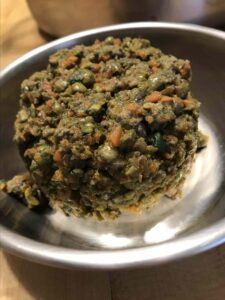Hypoallergenic diet dog food is specially formulated to minimize allergic reactions in dogs. It typically uses limited ingredients and alternative protein sources.
Finding the right food for dogs with allergies can be challenging. Many common ingredients in commercial dog food can trigger sensitivities, leading to skin irritations, digestive issues, and other health problems. Hypoallergenic dog food aims to address these concerns by using novel proteins and fewer ingredients.
This type of diet helps identify and eliminate allergens, providing dogs with a healthier option. Pet owners often notice improvements in their dog's overall well-being after switching to a hypoallergenic diet. Understanding your dog's specific needs is crucial for selecting the best hypoallergenic food, ensuring a happier and healthier life for your furry companion.
The Rise Of Hypoallergenic Diet Dog Food
More pet owners choose hypoallergenic diet dog food. This trend responds to increasing pet allergies. Many dogs suffer from food allergies. Hypoallergenic diets help manage these conditions effectively.
Common Allergies In Dogs
Dogs can have various allergies. Here are some common allergens:
- Beef
- Chicken
- Dairy
- Wheat
- Eggs
- Fish
Symptoms of food allergies may include:
- Itching
- Red skin
- Ear infections
- Digestive issues
Identifying these allergies is crucial. Owners should consult a vet for proper diagnosis.
Why Hypoallergenic Options Are Gaining Popularity
Pet owners seek hypoallergenic options for several reasons:
| Reason | Description |
|---|---|
| Health Benefits | Reduces allergy symptoms in sensitive dogs. |
| Variety of Ingredients | Offers unique protein sources like lamb or duck. |
| Easy to Digest | Special formulations aid in digestion. |
| Increased Awareness | More information available on dog allergies. |
Pet owners want the best for their dogs. Hypoallergenic diets provide peace of mind. Dogs can enjoy their meals without discomfort.
Identifying Food Allergies In Dogs
Understanding food allergies in dogs is essential for their health. Many dogs suffer from food sensitivities. Recognizing the signs early helps in managing their diet effectively. Owners should be aware of common symptoms and diagnostic methods.
Symptoms To Watch For
Food allergies can show various symptoms. Watch for these signs:
- Itching: Excessive scratching or biting at skin.
- Skin Issues: Red, inflamed, or flaky skin.
- Ear Infections: Frequent ear problems or bad odor.
- Digestive Problems: Vomiting or diarrhea.
- Weight Changes: Sudden weight loss or gain.
Symptoms may vary by dog. Some dogs show multiple signs, while others may have only one.
Diagnostic Approaches
Diagnosing food allergies involves several steps. Here are common methods:
- Veterinary Consultation: Discuss symptoms with a vet.
- Elimination Diet: Remove potential allergens from the diet.
- Food Trials: Introduce hypoallergenic dog food gradually.
- Allergy Testing: Conduct tests for specific allergens.
Each approach helps pinpoint the exact allergen. Work closely with your vet for the best results.
Key Ingredients To Avoid
Choosing the right hypoallergenic diet dog food can be tricky. Certain ingredients can trigger allergies in dogs. Avoiding these ingredients is crucial for your pet's health. Here are the key ingredients to watch out for.
Allergenic Proteins And Grains
Many dog foods contain common proteins and grains. These ingredients often lead to allergic reactions. Here are some to avoid:
- Beef – A common allergen in many dog foods.
- Chicken – Often used but can cause sensitivities.
- Dairy – Many dogs are lactose intolerant.
- Wheat – A frequent grain allergy source.
- Corn – Can lead to skin and stomach issues.
Always check the ingredient list. Look for alternative protein sources like lamb or fish.
Artificial Additives And Preservatives
Many commercial dog foods use artificial ingredients. These can harm your dog's health. Here are some to avoid:
| Artificial Additive | Potential Risks |
|---|---|
| Coloring Agents | Can cause hyperactivity and allergies. |
| Flavor Enhancers | Might lead to digestive issues. |
| Preservatives | May contain harmful chemicals. |
Choose natural foods without these additives. They are better for your dog's well-being.
Benefits Of Hypoallergenic Diets For Dogs
Hypoallergenic diets for dogs offer many benefits. These specialized foods help manage allergies and improve overall health. They can enhance your dog’s quality of life. Let's explore the key benefits of hypoallergenic diets.
Improved Digestive Health
Many dogs suffer from digestive issues. Hypoallergenic diets can help in these cases. They contain limited ingredients that are easier to digest.
- Reduces gas and bloating.
- Minimizes diarrhea and constipation.
- Supports a healthy gut.
These diets often include:
| Ingredient | Benefit |
|---|---|
| Novel proteins | Less likely to cause allergies |
| Digestive enzymes | Enhances nutrient absorption |
| Prebiotics | Supports gut health |
Enhanced Skin And Coat Condition
Skin problems are common in dogs with allergies. Hypoallergenic diets can significantly improve skin health.
- Reduces itching and irritation.
- Promotes a shiny coat.
- Lessens skin infections.
Key ingredients that support skin health include:
| Ingredient | Benefit |
|---|---|
| Omega fatty acids | Moisturizes skin and coat |
| Antioxidants | Reduces inflammation |
| Vitamins | Supports skin repair |
Choosing hypoallergenic diets can lead to happier, healthier dogs.
Selecting The Right Hypoallergenic Dog Food
Choosing the best hypoallergenic dog food is essential for your pet’s health. Allergies can cause discomfort and health issues. Selecting the right food can help reduce these problems.
Reading Labels And Ingredients Lists
Understanding labels is crucial. Here are key points to consider:
- Single Protein Source: Look for foods with one protein source.
- Limited Ingredients: Choose options with fewer ingredients.
- No Fillers: Avoid foods with fillers like corn or soy.
- Novel Proteins: Consider novel proteins like duck or rabbit.
- Grain-Free Options: Some dogs benefit from grain-free diets.
Always check for potential allergens. Common allergens include:
- Beef
- Chicken
- Dairy
- Wheat
Consulting With A Veterinarian
Talking to a veterinarian is vital. They can help determine your dog's specific needs. Follow these steps:
- Schedule an Appointment: Discuss your dog’s allergies.
- Ask for Recommendations: Get suggestions for hypoallergenic brands.
- Monitor Your Dog: Observe any changes after switching foods.
- Regular Check-Ups: Keep your vet updated on your dog's health.
Take advice from Pet Expert Dr Marty
ESA Pet is an online service that helps you get a legitimate ESA letter
Pet vitamin supplements and grooming products
A veterinarian can guide you through the selection process. Their expertise will ensure your dog stays healthy.

Purina Pro Plan
Homemade Vs. Commercial Hypoallergenic Diets
Choosing between homemade and commercial hypoallergenic dog food is crucial. Each option has its benefits and drawbacks. Understanding these can help you make the best choice for your furry friend.
Pros And Cons Of Homemade Diets
Homemade hypoallergenic diets allow you to control ingredients. This can be beneficial for dogs with specific allergies. However, they also come with challenges.
| Pros | Cons |
|---|---|
| Control over ingredients | Time-consuming to prepare |
| Can tailor to dog’s needs | Risk of nutritional imbalance |
| Fresh, quality ingredients | Cost can be higher |
Homemade Dog Food
Homemade diets can be great for picky eaters. They can also help avoid common allergens. Always consult a vet for balanced recipes.
Evaluating Commercial Dog Food Brands
Commercial hypoallergenic diets offer convenience. They come pre-packaged and are easy to store. Not all brands are equal in quality.
- Read ingredient labels carefully.
- Look for limited ingredient formulas.
- Choose brands with high-quality protein sources.
Check for certifications from reputable organizations. This ensures the product meets safety standards. Consider brands with positive reviews from other dog owners.
- Review the company’s reputation.
- Examine the sourcing of ingredients.
- Assess the nutritional profile.
Commercial diets can be a reliable choice. They offer balanced nutrition and save time. Ensure you select a brand that fits your dog's needs.
Transitioning To A Hypoallergenic Diet
Switching your dog to a hypoallergenic diet requires care. This diet helps dogs with food allergies. A gradual transition is key. It minimizes digestive upset. Follow these steps for a smooth change.
Step-by-step Switching Process
- Choose the Right Food: Select a vet-recommended hypoallergenic dog food.
- Start Gradually: Mix 25% new food with 75% old food for the first few days.
- Increase New Food: After three days, shift to 50% new and 50% old.
- Continue Mixing: On day seven, mix 75% new food with 25% old food.
- Full Transition: After 10-14 days, feed 100% hypoallergenic food.
Monitoring Your Dog's Reaction
Watch for signs of improvement or discomfort. Common signs include:
- Improved Coat Condition: Shiny and healthy fur.
- Less Itching: Reduced scratching and biting.
- Better Digestion: Fewer gas and stool issues.
Note any negative reactions like:
- Vomiting
- Diarrhea
- Increased itching
If issues arise, consult your vet. Adjust the diet as needed.
Long-term Management Of Food Allergies
Managing food allergies in dogs requires a consistent approach. A hypoallergenic diet plays a crucial role. This diet helps identify and eliminate allergens. Long-term management focuses on two key areas: maintaining a balanced diet and regular allergy assessments.
Maintaining A Balanced Diet
A balanced diet is essential for dogs with food allergies. It ensures they receive all necessary nutrients. Here are some tips for maintaining a balanced diet:
- Choose high-quality hypoallergenic dog food.
- Incorporate novel protein sources like duck or venison.
- Include carbohydrates such as sweet potatoes or peas.
- Monitor fat content for overall health.
- Gradually introduce new foods to avoid reactions.
Check food labels for hidden allergens. This helps prevent unexpected reactions. Consult a vet for personalized dietary plans.
Regular Allergy Assessments
Regular allergy assessments are vital. They help track your dog’s reactions over time. This can lead to better management of their allergies. Key points include:
- Schedule vet visits every six months.
- Keep a food diary to track meals and reactions.
- Perform elimination diets under vet supervision.
- Consider allergy testing for precise identification.
Document any changes in your dog’s health. This information is useful for vet consultations. Adjust the diet based on assessment results. Regular assessments help ensure your dog remains healthy.
Success Stories And Testimonials
Many dog owners share their journeys with hypoallergenic diet dog food. Their stories highlight the positive changes in their pets' health and happiness. Here are some inspiring examples.
Real-life Cases
- Max the Beagle: Max suffered from itchy skin and constant scratching. After switching to hypoallergenic food, his skin improved significantly.
- Luna the Poodle: Luna had digestive issues. Her owner changed her diet, and now she enjoys regular meals without upset stomachs.
- Buster the Bulldog: Buster faced allergies that made him lethargic. Since the diet change, he has more energy and plays happily.
Improvements Observed From Owners
| Owner Name | Dog's Name | Improvements |
|---|---|---|
| Sarah | Max | Less itching and more playtime |
| John | Luna | Better digestion and energy |
| Emily | Buster | Increased activity and joy |
Owners report various improvements:
- Healthier skin and coat.
- Improved digestion.
- Increased energy and playfulness.
- Better overall mood.
These success stories prove the benefits of hypoallergenic dog food. Many pets thrive on these specialized diets, leading to happier lives.

Hill's Science Diet
Frequently Asked Questions About Hypoallergenic Diet Dog Food
What Is A Hypoallergenic Diet For Dogs?
A hypoallergenic diet for dogs aims to reduce allergic reactions by using limited ingredients. This diet typically excludes common allergens like wheat, soy, and certain proteins. Instead, it includes novel protein sources, such as duck or fish, which can help dogs with food sensitivities thrive.
How Do I Know If My Dog Needs Hypoallergenic Food?
Signs that your dog may need a hypoallergenic diet include persistent itching, gastrointestinal issues, or skin irritations. Consult your veterinarian for a proper diagnosis and to discuss dietary changes. A hypoallergenic diet can often alleviate these symptoms and improve your dog's overall health.
What Ingredients Are In Hypoallergenic Dog Food?
Hypoallergenic dog food often contains limited, high-quality ingredients. Common components include novel proteins like venison, fish, or rabbit, and easily digestible carbohydrates like sweet potatoes. This simplicity helps minimize the risk of allergic reactions in sensitive dogs.
Can I Make Hypoallergenic Dog Food At Home?
Yes, you can prepare hypoallergenic dog food at home. It’s essential to use novel proteins and avoid common allergens. Always consult your veterinarian before making homemade food to ensure it meets your dog's nutritional needs and is safe for consumption.
Conclusion
Choosing hypoallergenic diet dog food can greatly improve your pet's health. It reduces allergy symptoms and promotes overall well-being. Always consult your veterinarian before making dietary changes. A proper diet can enhance your dog's quality of life, ensuring they stay happy and active.
Invest in their health today for a brighter tomorrow.














